Your Cart is Empty
Chalkbrood is a brood disease caused by the fungus, Ascosphaera apis. It is a spore-forming fungus that infects the larval stage of honeybees. It is present across the world.
Chalky-white in its early presence, the infection can quickly spread across a hive’s larvae and cause significant damage if left unaddressed. Over time, chalkbrood mummifies sealed larvae and can kill a high number of the brood. The kill-off inevitably affects overall hive operations and decreases honey output.
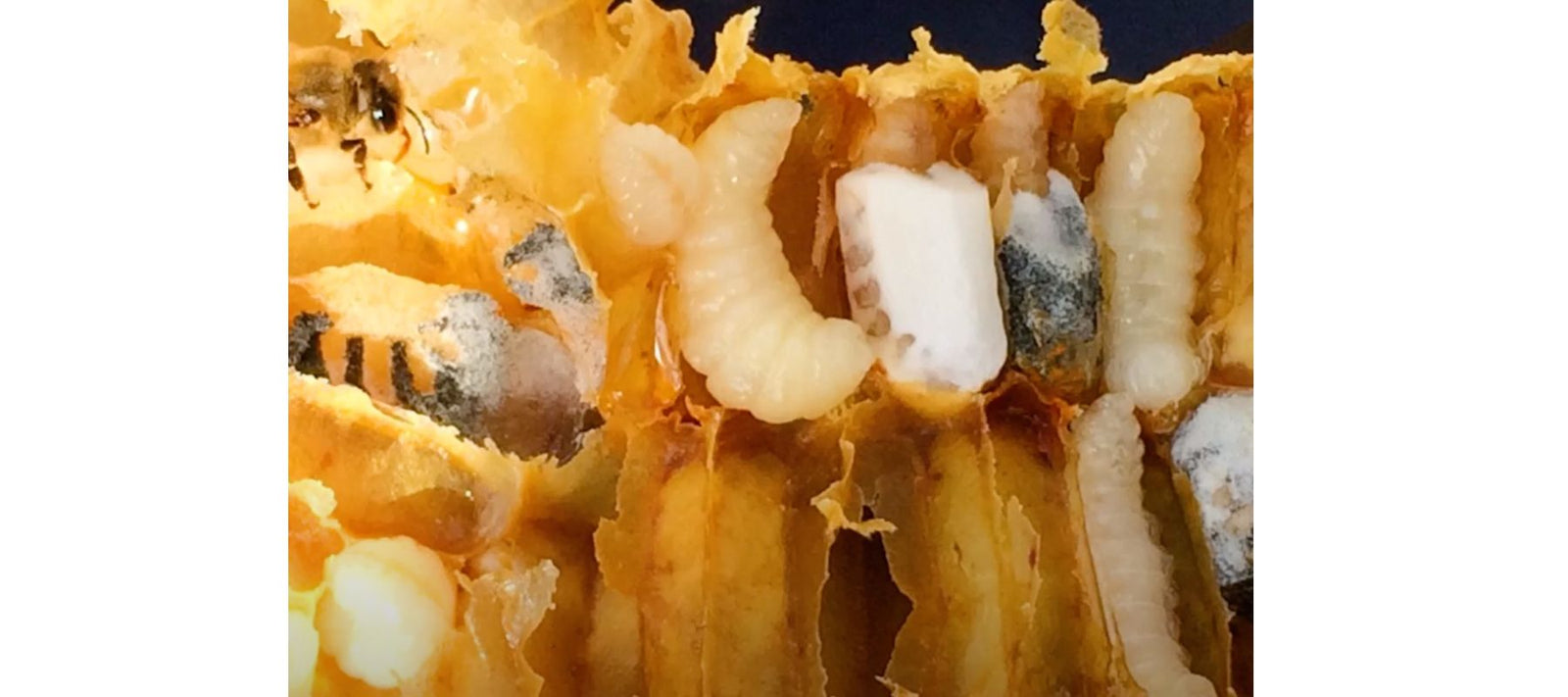
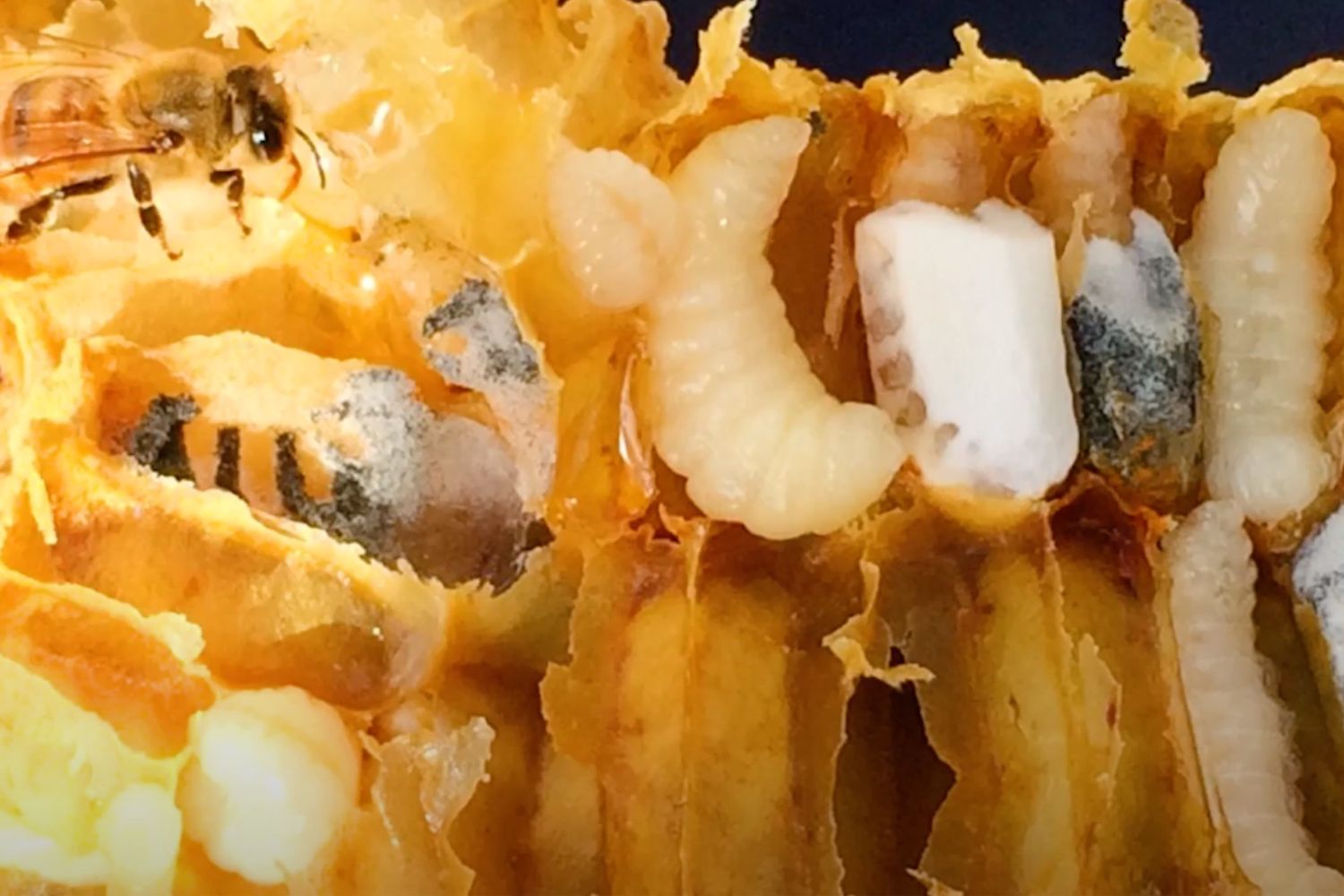
Larvae infected with chalkbrood
Chalkbrood infection is unlikely to kill a honeybee colony but it can weaken the hive by reducing the colony’s population. This can affect honey production and increase susceptibility to other diseases.
The fungus propagates by spores. Bee larvae consume these spores which germinate inside the larval gut. Fungal hyphae penetrate the gut wall absorbing nutrients and eventually killing the larva.
Within a few days, fungal hyphae erupt from the larva, coating the surface in fungal growth similar to white mould. The fungal growth hardens, forming white chalk-like “mummies”.
Mummified larva will transition from a white to grey-black colour as the fungus produces spores capable of infecting a new larval host.
Each Chalkbrood mummy will produce millions of spores that stick to hive components, pollen and adult bees. Spores will remain capable of infecting other bee larvae for up to 15 years.
Initial contact with fungal spores typically occurs when honeybees are out collecting pollen. The bees introduce fungal spores into the colony and food, which the larvae then consume. Additionally, robber bees or poor colony husbandry may introduce the fungus into a hive.
Chalkbrood is very widespread, but it is still a notifiable disease in some states. Ensure that you are familiar with your local regulations.
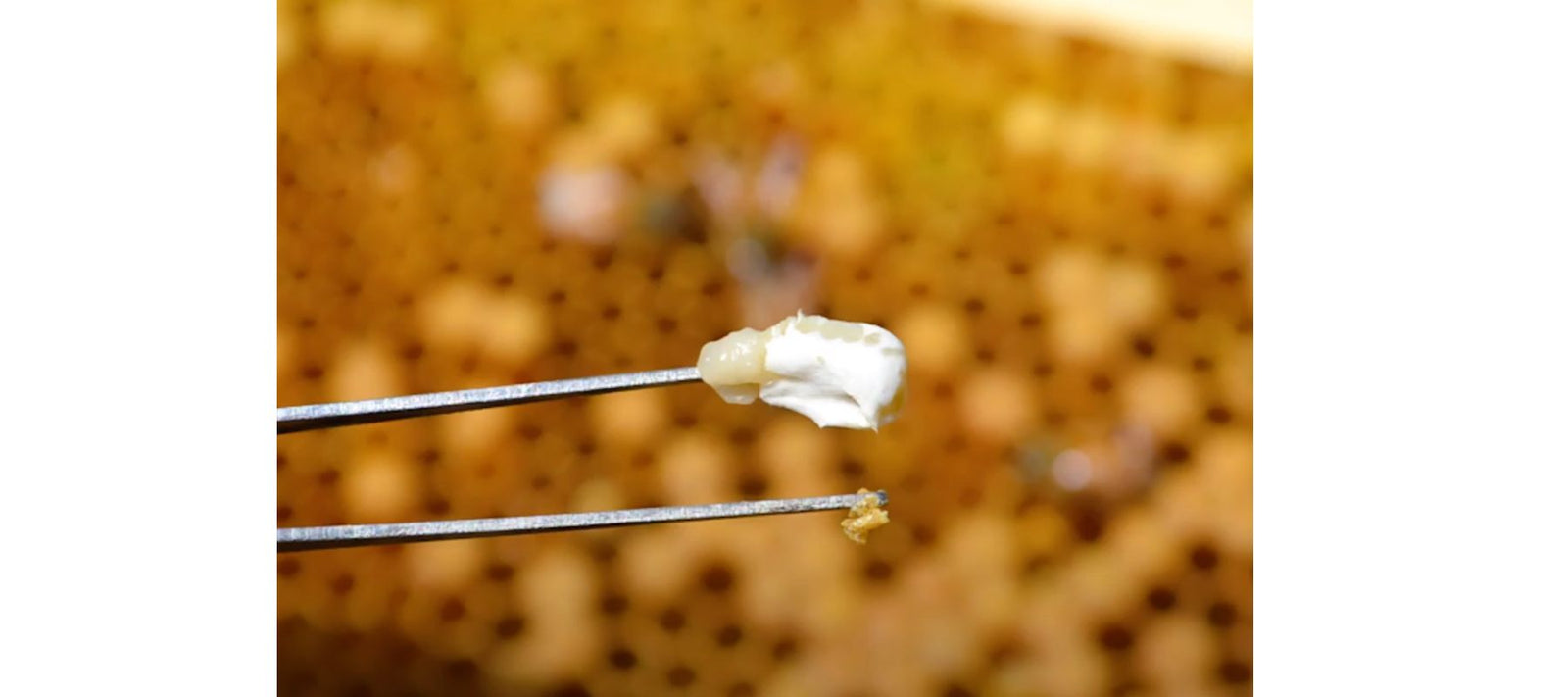
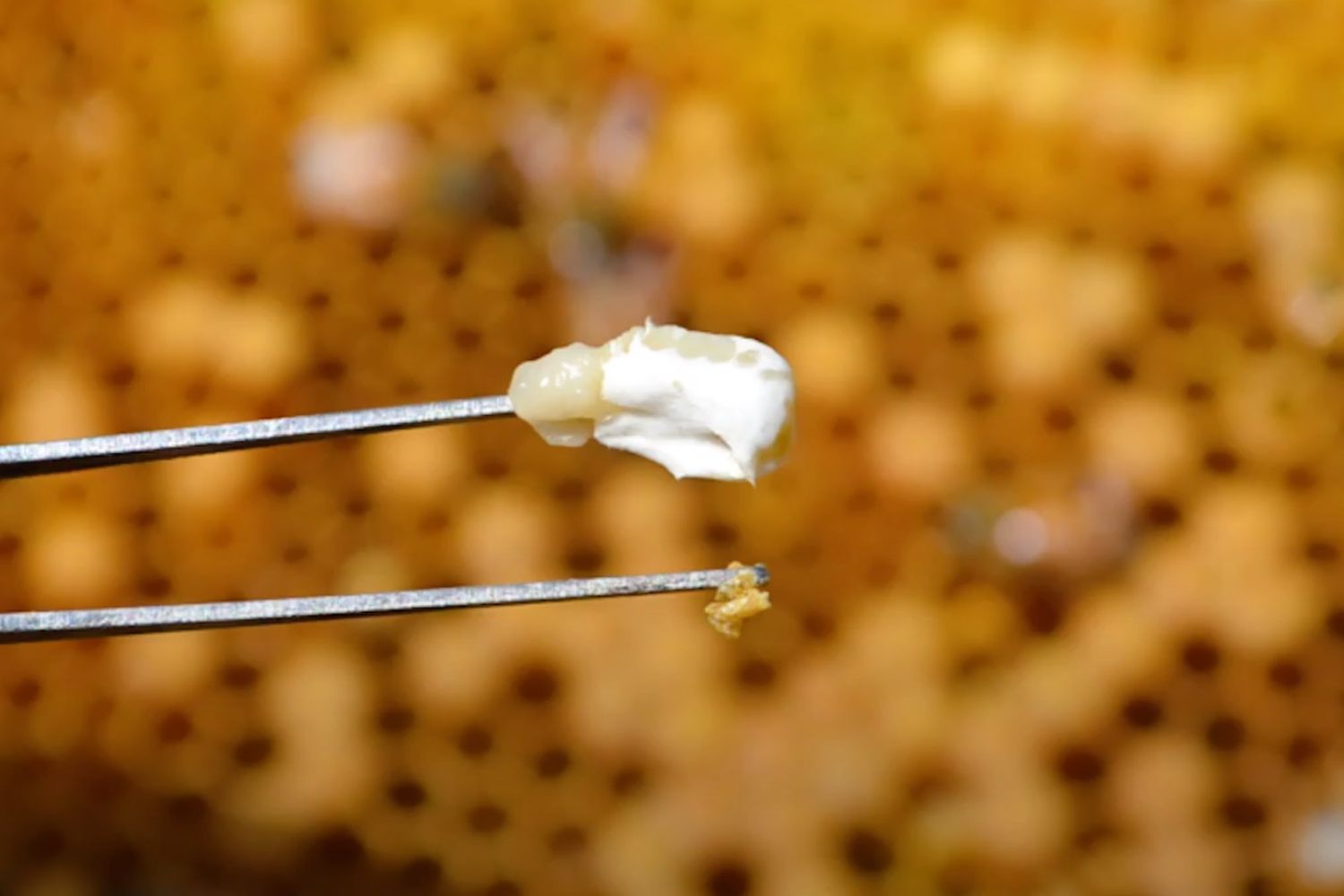
Bee larva with protruding fungal hypha
Symptoms of chalkbrood are often confused with other conditions or infections within a colony. Look out for the following signs:
MUMMIFIED LARVAE
Once the fungus has killed the larvae, it hardens them into a mummy-like appearance. In many cases, these mummified larvae can be found in the hive entrance or in the pest management tray. Dead larvae are also typically found in the brood nest.
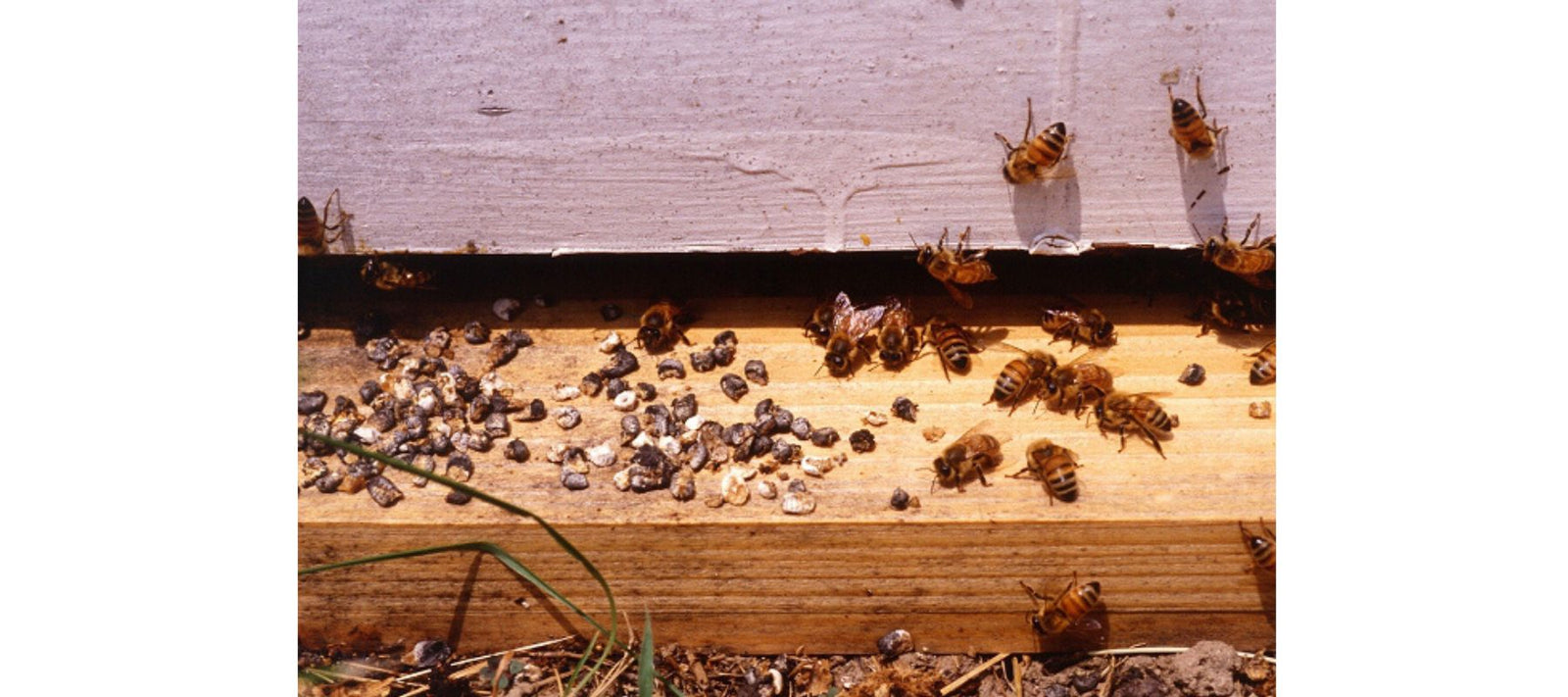
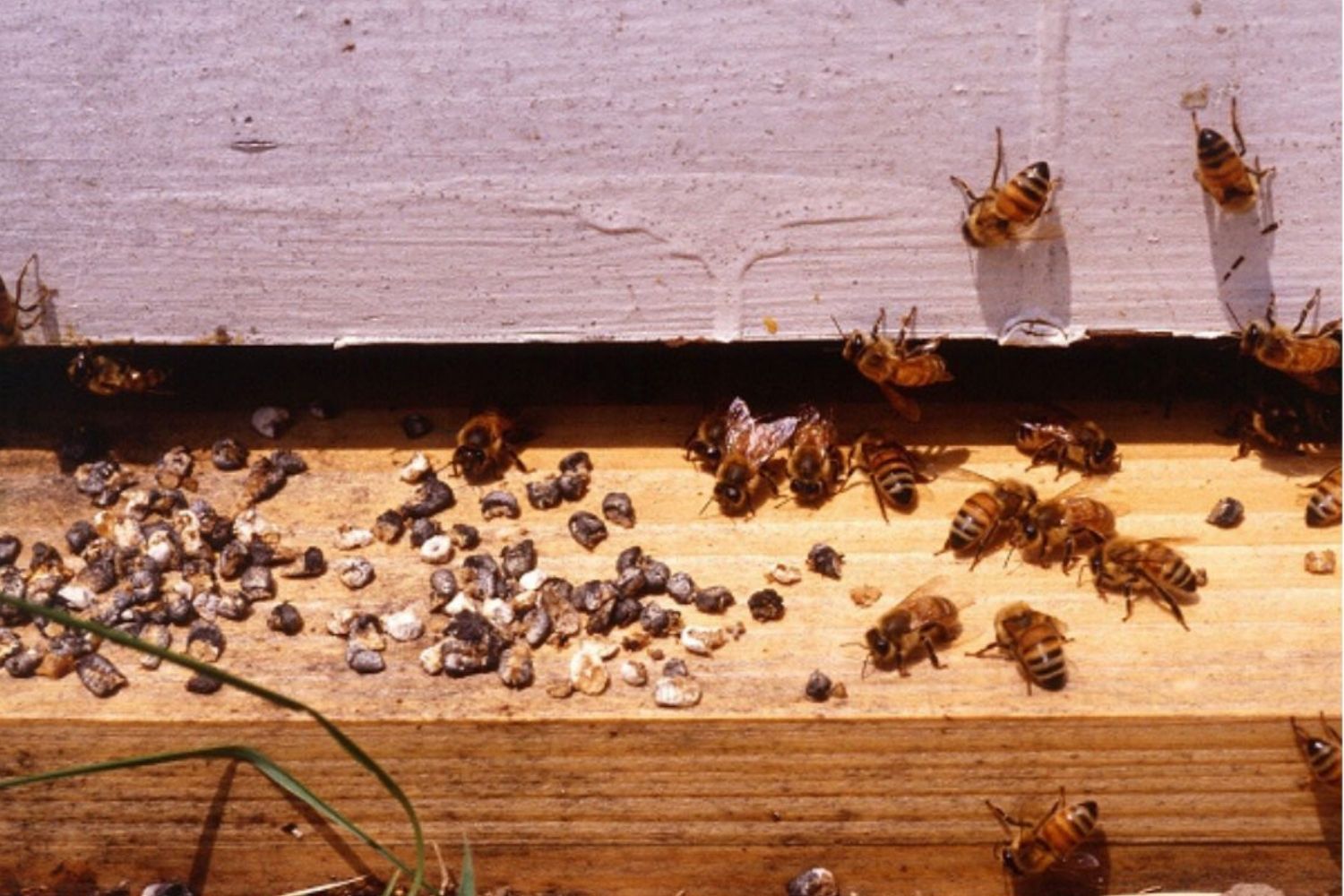
Mummified larvae at a hive entrance
CHALKY-WHITE COVERING ON LARVAE
The telltale sign of chalkbrood infestation in its earlier stages is a cotton-like chalky-white material covering bee larvae. Filaments may be found evenly or sporadically across the larvae.
GREY OR BLACK FUNGUS ON LATER-STAGE INFECTION
As the chalkbrood infestation worsens, the chalky-white colouration slowly changes to a grey or even a black appearance in the later stages of the fungus.
SMALL HOLES IN CAPPED BROOD
Small perforations in the brood cell cappings can indicate chalkbrood infection. If you see a hole in the wax capping, open up the cell to check the larva inside. If the larva is healthy, it is likely the bees were in the process of sealing the cell. If the larval head is shrivelled, remove the larva and look for white hyphae growing out of the larva. This is a clear sign of chalkbrood infection.
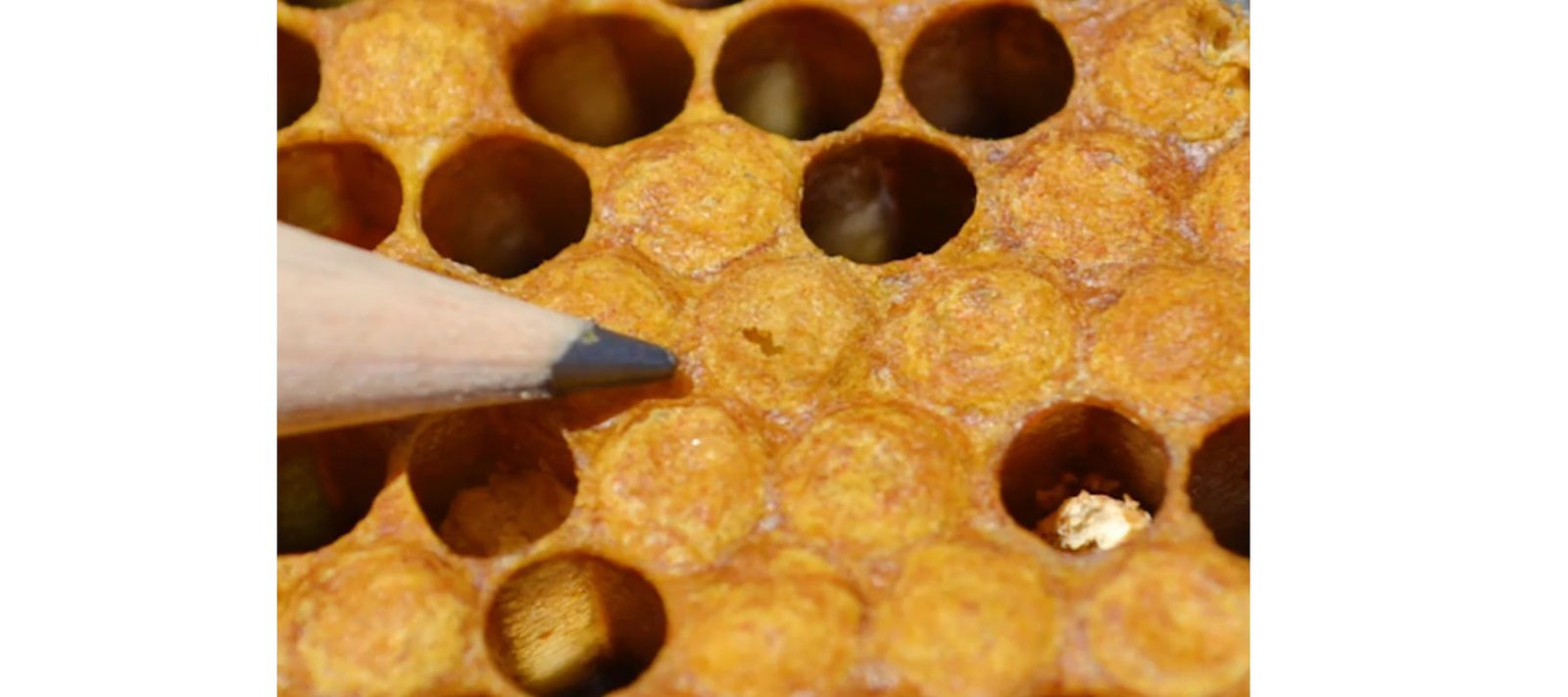
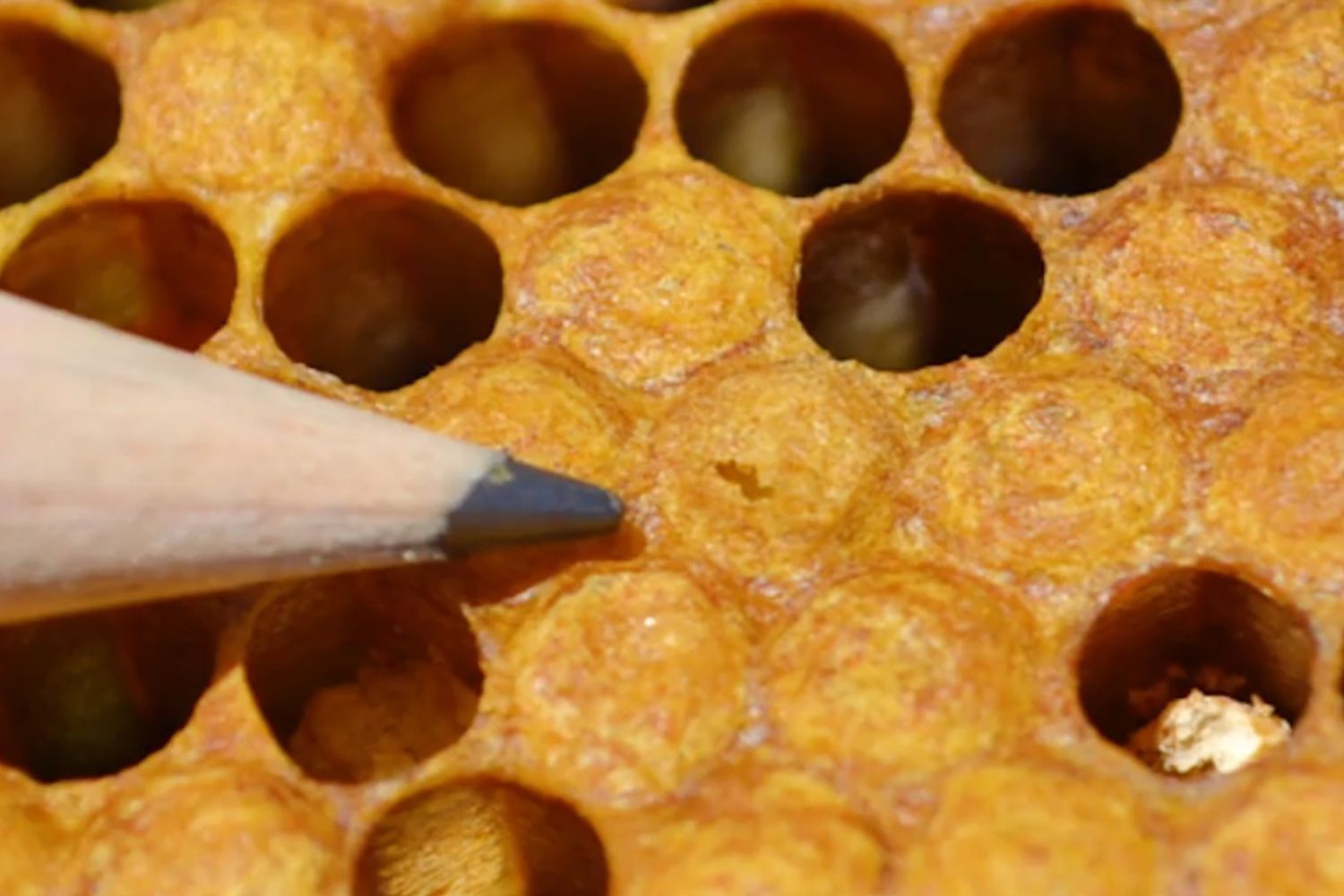
Torn cell capping
The strongest strategy against chalkbrood infection is preventative care and maintenance of the hive and the colony.
MAINTAIN CONTROLLED, SANITARY BEE HUSBANDRY
Aside from initial introduction into the colony, in many cases, beekeepers themselves are responsible for spreading chalkbrood across their hives. High awareness of cleanliness, sanitation and cross-contamination can prevent the spread of the infection to other hives.
Beekeepers must remain aware of the equipment and tools being used — particularly if they suspect or confirm the presence of chalkbrood. Ongoing sanitation procedures and responsible husbandry are the best preventative measures any beekeeper can take.
KEEP HIVES WARM AND DRY (OR TEMPERATURE-CONTROLLED IN EXTREME CASES)
Chalkbrood tends to propagate most frequently in cooler, wetter environments. Accordingly, keeping the hive warm, dry and well-ventilated areas can also help prevent potential infection. This holds especially true in cooler seasons where positioning hives in sunnier locations is advised.
In cooler climate areas prone to high humidity, maintaining bees in a temperature-controlled environment will help reduce the risk of chalkbrood. This measure is typically only necessary in areas where continued infections occur despite other preventative measures.
Eradicating chalkbrood often boils down to maintaining a strong and vibrant colony. A robust population of bees is more resistant to fungal infections than weak or sparse hives. The ideal situation is to keep a colony strong so they can fight against a potential infection themselves.
In more severe cases, full replacement of comb frames may be necessary to guarantee full eradication of the disease. Many beekeepers recommend burning wooden frames that have been affected and replacing them with new ones.
In cases where the fungus has already caused significant damage, a requeening with a stronger brood and stock may be appropriate.
A high presence of the mummified larvae indicates the worker bees are not cleaning the hive appropriately. Beekeepers should remove the dried-out larvae, clean affected areas and requeen to develop a stronger, more resistant population.
Sources:
- Jody Gerdts. Hive Health: Chalkbrood. TheBeekeeper.org
- honeybeesuite.com/chalkbrood-disease-of-honey-bees
- beeaware.org.au/archive-pest/chalkbrood
- beesource.com/resources/usda/chalkbrood-research-at-madison-wisconsin
Picture Credits:
- The Animal Plant Health Agency (APHA), Crown Copyright
- Jody Gerdts, Bee Scientifics
- Jody Gerdts, Bee Scientifics
- Jeff Pettis, CC BY 3.0, via Wikimedia Commons
- Jody Gerdts, Bee Scientifics
Beekeeping requires specialist skills, carries inherent dangers, and is often subject to regulation. Instructional content we provide is intended as a general guide only and may not be applicable to your specific circumstances. If in doubt, seek assistance from your local authority, a professional beekeeping service or your nearest beekeeping association.










